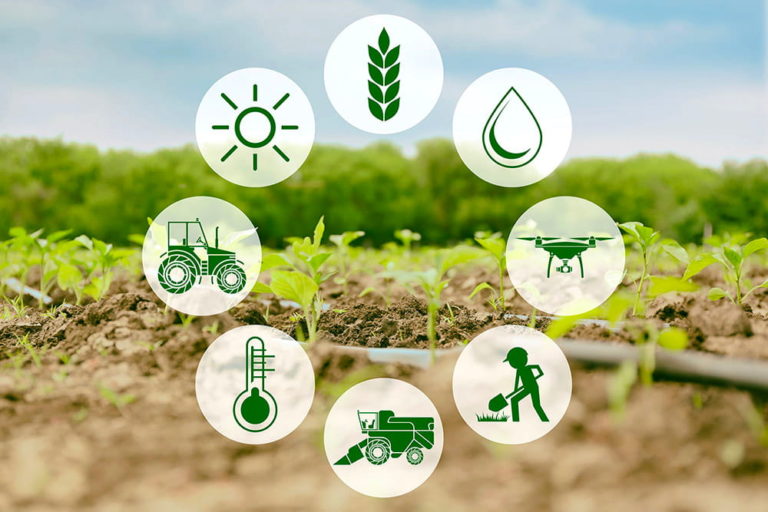Five Significant Impacts Of Technology In Agriculture

Technology has become a driving force in revolutionizing various industries, and agriculture is no exception. With the world's population steadily increasing, there is an urgent need to meet the growing demand for food, fiber, and fuel while ensuring sustainable and efficient farming practices. In this context, technology has emerged as a powerful tool that has transformed the agricultural landscape, enabling farmers to overcome challenges and maximize productivity.
This article explores five significant impacts of technology in agriculture and how these advancements have reshaped traditional farming practices. From precision farming and automation to the Internet of Things (IoT), genetic engineering and biotechnology, and data analytics and artificial intelligence (AI), each of these areas has made remarkable contributions to the sector.
Precision farming leverages advanced technologies such as GIS, GPS, remote sensing, and data analytics to optimize agricultural practices on a field-by-field basis. Automation and robotics have reduced labor requirements and increased operational efficiency, enabling tasks to be performed with precision and speed. The IoT has connected physical devices and systems, allowing real-time data collection and informed decision-making. Genetic engineering and biotechnology have accelerated crop breeding and genetic improvement, enhancing resistance to pests, diseases, and environmental stressors. Data analytics and AI have provided valuable insights, optimizing resource allocation and facilitating predictive models for crop yields and market demand.
By understanding these impacts, we can gain insight into how technology is shaping the future of agriculture and fostering sustainability and productivity. However, it is crucial to address challenges related to access, training, ethics, and regulations to ensure equitable and responsible implementation. Embracing technology in agriculture holds immense potential to meet the world's food needs, mitigate environmental impact, and pave the way for a more resilient and sustainable agricultural system.
- Precision Farming
- Automation and Robotics
- Internet of Things (IoT)
- Genetic Engineering and Biotechnology
- Data Analytics and Artificial Intelligence
Five Significant Impacts of Technology in Agriculture
1. Precision Farming
Precision farming, also known as site-specific farming or precision agriculture, refers to the use of advanced technologies to optimize agricultural practices on a field-by-field or even plant-by-plant basis. This approach relies on the integration of various technologies such as geographic information systems (GIS), global positioning systems (GPS), remote sensing, and data analytics. Precision farming enables farmers to make informed decisions regarding crop planting, fertilization, irrigation, and pest management. By utilizing real-time data and sensors, farmers can monitor soil conditions, crop health, and weather patterns accurately. This precise information allows for targeted resource allocation, reducing input wastage, minimizing environmental impact, and maximizing crop yields. Precision farming has led to improved efficiency, profitability, and sustainability in agriculture.
2. Automation and Robotics
READ ALSO » 7 Impacts Of Technology On Economic Growth
The integration of automation and robotics in agriculture has revolutionized traditional farming practices. Automated machinery, such as robotic harvesters, autonomous tractors, and drones, have significantly reduced labor requirements and increased operational efficiency. These technologies enable farmers to carry out tasks with higher precision and speed, ensuring uniformity in crop production. Robotic systems equipped with computer vision and artificial intelligence can perform delicate operations, such as harvesting fragile fruits or selectively removing weeds without harming crops. The adoption of automation and robotics has increased productivity, reduced costs, and mitigated the challenges associated with labor shortages in agriculture.
3. Internet of Things (IoT)
The Internet of Things (IoT) has emerged as a transformative technology in agriculture, enabling the connection and communication between physical devices and systems. In smart farming, IoT devices, including sensors, actuators, and smart devices, are deployed throughout the farm to collect and transmit data in real-time. These devices monitor crucial parameters such as soil moisture, temperature, humidity, and crop growth. The data collected from IoT devices can be analyzed to gain insights into crop health, disease detection, and irrigation requirements. IoT-based systems can automate irrigation, control climate conditions in greenhouses, and optimize resource usage based on real-time data. By leveraging IoT, farmers can make data-driven decisions, conserve resources, and improve overall farm management.
4. Genetic Engineering and Biotechnology
Genetic engineering and biotechnology have revolutionized crop breeding and genetic improvement. Through genetic modification, scientists can introduce desirable traits into crops to enhance their resistance to pests, diseases, and environmental stressors. Genetic engineering has also led to the development of genetically modified (GM) crops with improved nutritional profiles and increased yields. Biotechnology techniques, such as tissue culture and marker-assisted breeding, have accelerated the breeding process, enabling the development of new varieties with desired traits in a shorter time frame. These advancements have contributed to increased crop productivity, reduced post-harvest losses, and improved food security. However, ethical and regulatory considerations are essential to ensure the safe and responsible application of these technologies.
5. Data Analytics and Artificial Intelligence
The abundance of data generated by various agricultural systems presents an opportunity to extract meaningful insights using data analytics and artificial intelligence (AI). By analyzing large datasets, AI algorithms can identify patterns, predict crop yields, optimize resource allocation, and provide recommendations for precise decision-making. Machine learning algorithms can identify diseases, pests, and weeds based on image recognition, allowing for early detection and targeted intervention. AI-powered systems can also facilitate the optimization of supply chains, improving logistics, and reducing post-harvest losses. Moreover, AI-based forecasting models can predict market demand, enabling farmers to make informed decisions regarding crop selection and production planning. The integration of data analytics and AI in agriculture has the potential to enhance productivity, reduce waste, and ensure sustainable farming practices.
In conclusion, Technology has revolutionized the agriculture sector, bringing about significant impacts that have transformed traditional farming practices. Precision farming has enabled farmers to optimize resource allocation, increase productivity, and reduce environmental impact. Automation and robotics have reduced labor requirements and increased operational efficiency. The Internet of Things (IoT) has facilitated real-time data collection and decision-making, improving farm management. Genetic engineering and biotechnology have accelerated crop breeding and genetic improvement, contributing to increased yields and improved food security.
